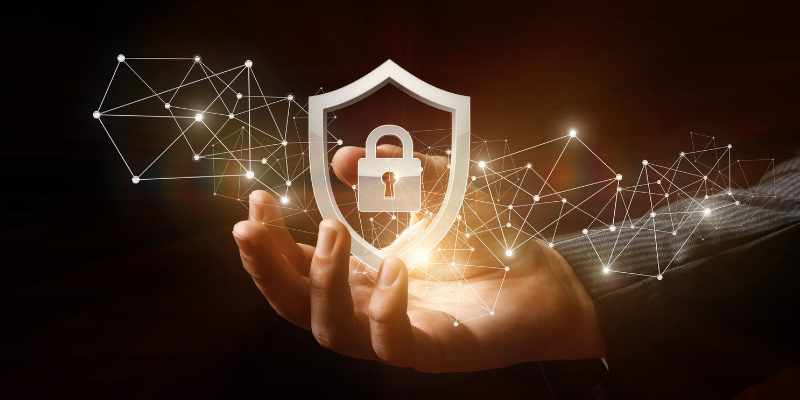With the increasing dependence on digital data, NAS devices have become a centerpiece of both personal and business systems. These devices provide easy remote storage and access options, so security must be the top priority. Considering the growing importance of cyber threats, protecting confidential information is crucial. The NAS Security Guide details critical best practices that will strengthen their data against potential hazards and provide users with detailed instructions to implement security. Whether you consume these practices for personal or professional purposes, their adoption ensures a strong defense; your information is secured from digital challenges.
A NAS is a storage solution in which data can be accessed and shared by different users or devices on the network. Security of NAS includes several measures to secure data stored within the system from unauthorized access, leaks, and other attacks.

To protect data within NAS, it is vital to establish due security measures. Diverse kinds of information in NAS devices include simple personal documents to critical business records. Any compromise at all is likely to produce terrible outcomes including data loss, invasion of privacy rights, and damages. Therefore, addressing the security needs of NAS should be viewed as paramount in preserving data integrity and confidentiality while limiting loopholes to intrusions or attacks.
Effective NAS security involves imposing rigid access controls and user management practices. Organizations can reduce the risks associated with unauthorized access through role-based permissions assignments and scheduled audits of access privileges and their updates when needed. Moreover, incorporating MFA authentication features for user login further strengthens the robustness of security measures and provides a higher level of safety by preventing attacks on sensitive information.
To enhance the security of NAS, intelligent choices must be made regarding encryption protocols that will protect data at every stage in its life cycle. Secure the data during transmission using SSL or TLS. First, the implementation of powerful encryptions like Advanced Encryption Standard (AES) used to secure data stored on NAS devices is aimed at strengthening an additional layer; this level deters potential attacks and subsequently advances confidentiality measures.
Proactive measures should, therefore, be taken to ensure that security is maintained in the NAS, such as regular software updates. Keep a constant eye out for updates from the NAS manufacturer and apply them immediately to firmware or software. To prevent potential weaknesses, timely updates are necessary to bolster the NAS from new security threats. Skipping this dimension may make the system vulnerable to abuse by attackers, highlighting a need for continuous implementation of security patches to ensure compliance with constantly evolving threats.
NAS security strengthening requires sophisticated firewall configuration on both device and network levels. Organizations can actively control data flow in and out by using firewalls that monitor incoming and outgoing traffic. Defining specific rules that allow only necessary services and applications to communicate the NAS eliminates the possibility of unauthorized access by malicious third parties. This detailed configuration is a vital protective belt, shielding the NAS from outside dangers and maintaining a safe operational environment.
Regular backups are a fundamental practice for implementing an effective NAS security strategy. Having a proper backup plan in place will safeguard the organization from possible data loss resulting from unpredictable occurrences such as hardware failures or ransomware attacks that ensure resilience. Frequent backups kept at a remote location protect against accidental deletions and serve as an important recovery tool when security incidents occur, reinforcing end-to-end data protection.
Increased NAS security is achieved through careful network segmentation, which separates the device from other parts of a bigger network. This proactive solution disallows lateral movement to potential attackers and locks them in their location even if network segment entry is gained. This segmentation type considerably strengthens network security, providing an extra protective layer against unauthorized entries and attacks.

Thorough NAS security requires enabling audit logs to trace user activities and control device access adequately. Regularly reviewing these logs is very important as it enables the timely detection of any suspicious or unauthorized activity. Strengthen proactive approaches through real-time monitoring features with instant alerts, allowing quick responses to potential security events and further bolstering NAS system integrity.
These measures include physical security through placement in a limited access area. Preventing physical access to authorized personnel is critical, and other key elements like surveillance cameras or biometric authentication further strengthen the device against unauthorized entry, protecting it from tampering or theft and enhancing overall security.
Focusing on the security of NAS involves user security awareness training. Educating them about best practices and the risks that are associated with NAS devices gives them a chance for individuals to understand suspicious activities. This preventative method greatly reduces the chances of being a victim of phishing or social engineering attacks, promoting an environment that is aware and very conscious about security.
A well-functioning security of the NAS requires periodic penetration testing that detects and solves any emerging weaknesses in infrastructure. In these tests, the simulation of real-world attack scenarios empowers organizations to fortify their defenses proactively and strengthen the security posture that is agile in a manner that not only withstands but also adapts according to ever-changing threats or potential risks.
In this digital world where information is an asset, securing the Network Attached Storage becomes a priority. By embracing an all-around approach encompassing access controls, encryption, regular maintenance, and user awareness, it is essential to ensure the security of stored data by reducing the risks involved. The above best practices will not only ensure your NAS device's safety but also help increase security and confidentiality in terms of information on this gadget. Stay proactive, stay secure.

By Peter Evans/May 14, 2024

By Susan Kelly/Apr 30, 2024

By Pamela Andrew/Apr 02, 2025

By Alice Ellis/Apr 23, 2024

By Susan Kelly/Apr 30, 2024

By Eleanor/Mar 12, 2025

By Eleanor/Apr 08, 2024

By Frederica/Dec 09, 2024

By Eleanor/Dec 09, 2024

By Elva Flynn/Feb 28, 2025

By Susan Kelly/Mar 09, 2024

By Celia Shatzman/Jun 03, 2025